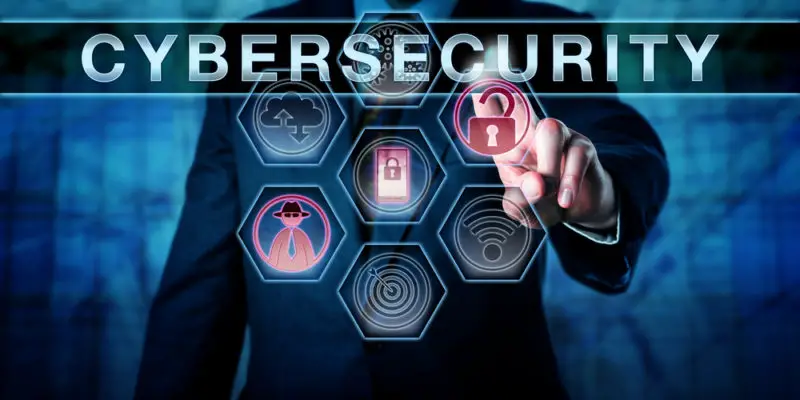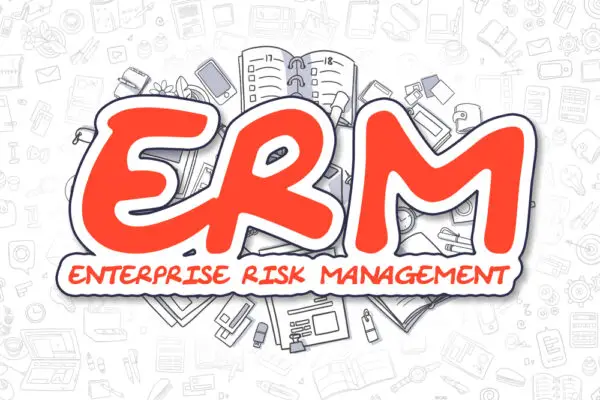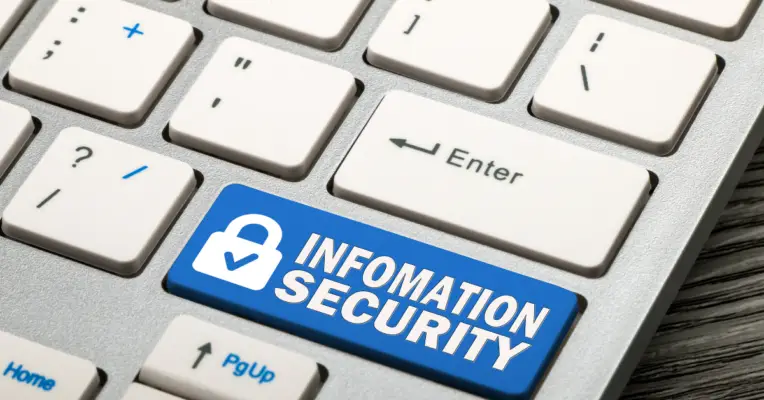Cybersecurity is a critical concern for organizations of all sizes and industries. Implementing effective cybersecurity measures has become increasingly important with the rising frequency and sophistication of cyber attacks.
The National Institute of Standards and Technology (NIST) is a leading authority on cybersecurity and provides guidelines and best practices for organizations to follow.

One of the key areas that NIST focuses on is risk management. NIST has developed a comprehensive framework that organizations can use to identify, assess, and manage cybersecurity risks.
The framework is designed to help organizations understand their cybersecurity risks and develop effective risk management strategies.
Organizations can better protect their assets and data from cyber threats by following the NIST guidelines for cybersecurity risk identification.
Understanding NIST and Its Role in Cybersecurity
The National Institute of Standards and Technology (NIST) is a non-regulatory federal agency within the United States Department of Commerce.
NIST’s mission is to promote innovation and industrial competitiveness by advancing measurement science, standards, and technology in ways that enhance economic security and improve quality of life.
In the realm of cybersecurity, NIST plays a critical role in providing guidelines, standards, and best practices for organizations across all sectors to manage and reduce their cybersecurity risk.
The NIST Cybersecurity Framework, first released in 2014, is a voluntary framework consisting of standards, guidelines, and best practices to manage cybersecurity risk. The framework consists of five core functions: Identify, Protect, Detect, Respond, and Recover.
The NIST Cybersecurity Framework enables organizations to develop and maintain their own individual cybersecurity programs based on their unique risk management needs.
Organizations can use the framework to improve their cybersecurity, protect critical assets, and reduce the likelihood of incidents.
NIST’s guidelines and standards are widely recognized and adopted across various sectors. For example, the financial sector has adopted NIST’s guidelines as a benchmark for their cybersecurity programs.
The healthcare sector also uses NIST’s guidelines and standards to ensure the protection of patient data.
NIST’s role in cybersecurity extends beyond just providing guidelines and standards. NIST also conducts research and development to improve cybersecurity capabilities and technologies.
NISTIR 8286, for example, is a report that provides a taxonomy and terminology to help organizations understand and communicate their cybersecurity risks.
NIST is a trusted source of cybersecurity guidance and resources for organizations across all sectors. Organizations can improve their cybersecurity capabilities and protect their critical assets by following NIST’s guidelines and adopting the NIST Cybersecurity Framework.
Key Concepts of Cybersecurity Risk Identification
Defining Cybersecurity Risks
Cybersecurity risk refers to the potential harm that can result from a successful cyber attack or unauthorized access to an organization’s information systems.
These risks can arise from various sources, including external attackers, insiders, and unintentional actions. Cybersecurity risks can be classified into three main categories: confidentiality, integrity, and availability. Confidentiality risks involve the unauthorized disclosure of sensitive information.
Integrity risks involve the unauthorized modification of data. Availability risks involve the disruption of access to information or systems.
Importance of Identifying Cybersecurity Risks
Identifying cybersecurity risks is a critical step in managing and mitigating those risks. Without proper identification, organizations may not be aware of the potential harm that can result from a successful cyber attack or unauthorized access to their information systems.
Identifying cybersecurity risks involves identifying threats, vulnerabilities, and assets. Threats refer to potential events or actions that can harm an organization’s information systems.
Vulnerabilities refer to weaknesses in an organization’s information systems that threats can exploit. Assets refer to the information, systems, and other resources that an organization needs to protect.
Once identified, cybersecurity risks should be documented in a risk register or cybersecurity risk register. These registers provide a comprehensive view of an organization’s cybersecurity risks and can be used to prioritize and manage those risks.
The risk register should include information such as the likelihood and impact of each risk and the controls in place to mitigate those risks.
Identifying cybersecurity risks is critical in managing and mitigating those risks. It involves identifying threats, vulnerabilities, and assets and documenting those risks in a risk register or cybersecurity risk register.
Organizations can better protect their information systems and reduce harm from cyber attacks by identifying and managing cybersecurity risks.
The NIST Cybersecurity Framework
The National Institute of Standards and Technology (NIST) has developed a voluntary framework to help organizations manage and reduce cybersecurity risks.
The framework consists of standards, guidelines, and best practices that can be customized to meet the specific needs of any organization, regardless of its size, sector, or level of cybersecurity risk.
Framework Functions
The framework is based on five core functions: Identify, Protect, Detect, Respond, and Recover.
These functions provide a systematic approach to managing cybersecurity risk, from identifying and assessing risk to implementing and monitoring controls to respond to and recover from cybersecurity incidents.
- Identify – This function involves developing an understanding of the organization’s cybersecurity risk posture, including its assets, vulnerabilities, threats, and potential impacts. This information is used to inform the development of a cybersecurity risk management strategy and to prioritize cybersecurity activities.
- Protect – This function involves implementing safeguards to protect the organization’s assets and systems from cybersecurity threats. This includes implementing access controls, encryption, and other security measures to prevent unauthorized access and ensure sensitive information’s confidentiality, integrity, and availability.
- Detect – This function involves implementing processes and tools to identify cybersecurity incidents in a timely manner. This includes monitoring systems for anomalies and suspicious activity and conducting regular assessments to identify vulnerabilities and potential threats.
- Respond – This function involves developing and implementing a plan to respond to cybersecurity incidents promptly and effectively. This includes establishing roles and responsibilities, defining communication channels, and conducting regular training and exercises to ensure readiness.
- Recover – This function involves developing and implementing a plan to restore systems and operations in the event of a cybersecurity incident. This includes conducting post-incident analysis to identify lessons learned and to improve the organization’s cybersecurity posture.
Applying the Framework
To apply the NIST Cybersecurity Framework (CSF), organizations should follow a structured process that involves the following steps:
- Prioritize and scope – Determine the scope of the CSF implementation and identify the systems, assets, data, and capabilities that are most critical to the organization’s mission and business objectives.
- Create a current profile – Develop a current profile of the organization’s cybersecurity risk posture, including its cybersecurity objectives, risk management approach, and baseline cybersecurity practices.
- Conduct a risk assessment – Identify and assess the cybersecurity risks to the organization’s systems, assets, data, and capabilities, and prioritize them based on their potential impact.
- Create a target profile – Develop a target profile that aligns with the organization’s risk management strategy and objectives and that identifies the desired cybersecurity outcomes and activities.
- Implement the target profile by identifying and selecting appropriate cybersecurity controls and implementing them prioritized and cost-effectively.
- Review and update – Continuously review and update the organization’s cybersecurity risk management strategy and practices to ensure that they remain effective and relevant.
Organizations can enhance cybersecurity and reduce risk exposure by following this process.
The NIST CSF provides a flexible and adaptable framework that can be customized to meet the specific needs of any organization and that is based on industry best practices and standards.
Role of Enterprise Risk Management in Cybersecurity
Enterprise Risk Management (ERM) plays a crucial role in Cybersecurity by providing a comprehensive approach to identify, assess, and manage risks that could affect an organization’s operations, assets, and reputation.
ERM is a framework that enables organizations to identify, prioritize, and manage risks across the enterprise. The National Institute of Standards and Technology (NIST) has developed a set of guidelines for integrating Cybersecurity and ERM, which provides a structured approach to managing risks associated with Cybersecurity.
The ERM process involves identifying, assessing, prioritizing, and managing risks across the enterprise. The process begins with the development of an enterprise risk profile, which identifies the risks that could impact the organization’s operations, assets, and reputation.
The enterprise risk profile provides a comprehensive view of the risks faced by the organization, which enables the organization to prioritize risks and allocate resources accordingly.
The integration of Cybersecurity and ERM provides a more holistic approach to managing risks associated with Cybersecurity.
The Risk Management Framework (RMF) provides a structured approach to managing risks associated with Cybersecurity by providing a set of guidelines for identifying, assessing, and managing risks.

The RMF provides a structured approach to managing risks associated with Cybersecurity by providing a set of guidelines for identifying, assessing, and managing risks.
The integration of Cybersecurity and ERM provides a comprehensive approach to managing risks associated with Cybersecurity.
The ERM process enables organizations to identify, assess, prioritize, and manage risks across the enterprise, while the RMF provides a structured approach to managing risks associated with Cybersecurity.
Organizations can better manage Cybersecurity risks and protect operations, assets, and reputation by integrating Cybersecurity and ERM.
Implementing NIST Guidelines for Risk Identification

Implementing NIST guidelines for risk identification is crucial in protecting an organization’s information system from cyber threats.
NIST provides comprehensive guidance for identifying risks and vulnerabilities in an organization’s information system.
This guidance includes a seven-step process that is flexible, repeatable, and measurable and can be used by any organization to manage information security and privacy risks.
The first step in implementing NIST guidelines for risk identification is identifying the information system and the resources that need protection.
This includes identifying the information system’s boundaries, components, and data flows and the resources that support the system, such as hardware, software, and personnel.
The second step is identifying the risks that could impact the information system and its resources. This involves conducting a risk assessment to identify potential threats, vulnerabilities, and impacts.
The risk assessment should consider the likelihood and impact of each risk and prioritize them based on their significance.
Once the risks have been identified, the next step is to create a risk register. The risk register is a document that lists all identified risks, their likelihood, impact, and priority, as well as the measures that will be taken to mitigate or manage them.
The fourth step is to develop risk management processes that address the risks identified in the risk register. This includes developing policies, procedures, and controls that are designed to mitigate or manage the identified risks. These processes should be regularly reviewed and updated to ensure their effectiveness.
The fifth step is to implement the risk management processes and controls. This involves putting the policies, procedures and controls into action to mitigate or manage the identified risks.
Finally, the sixth and seventh steps involve monitoring and reviewing the risk management processes and controls to ensure their effectiveness and identify any new risks.
This includes regularly reviewing the risk register, conducting periodic risk assessments, and updating the risk management processes and controls as needed.
Implementing NIST guidelines for risk identification is a critical step in protecting an organization’s information system from cyber threats.
Organizations can use NIST’s seven-step process to identify, prioritize, and manage risks while monitoring their effectiveness.
Stakeholder Communication and Feedback
Communication and feedback are essential components of the NIST guidelines for cybersecurity risk identification. NIST actively solicits direct feedback from stakeholders through various channels, including requests for information (RFI), requests for comments (RFC), and the NIST Framework team’s email [email protected].
External stakeholders, including developers, providers, and everyday users of cybersecurity and privacy technologies/information, are critical behind NIST’s cybersecurity and privacy programs.
During the public comment period, NIST provides an opportunity for external stakeholders to provide feedback on the guidelines and offer suggestions for improvement.
NIST also observes and monitors relevant resources and references published by government, academia, and industry.
Stakeholder communication is a two-way process, and NIST strives to keep stakeholders informed about the progress of the guidelines and any changes to the framework.
NIST also provides stakeholders with updates on emerging cybersecurity threats and vulnerabilities.
To ensure that the guidelines are practical and effective, NIST encourages stakeholders to provide feedback on their experiences with implementing the guidelines.
This feedback helps NIST identify areas where the guidelines can be improved and ensures that the guidelines remain relevant and up-to-date.
Stakeholder communication and feedback are critical components of the NIST guidelines for cybersecurity risk identification.
Actively seeking feedback and engaging with stakeholders enables NIST to guarantee that the guidelines are practical, effective, and relevant to the cybersecurity community’s needs.
Continuous Monitoring and Improvement
Continuous monitoring is an essential component of a cybersecurity risk management program. It involves the ongoing assessment of security controls, detection processes, and response capabilities to identify and mitigate cybersecurity events.
The National Institute of Standards and Technology (NIST) recommends that organizations establish a continuous monitoring program to provide visibility into organizational assets, awareness of threats and vulnerabilities, and visibility into the effectiveness of deployed security controls.

Continuous monitoring includes the following key activities:
- Assessment of changes: Organizations should continuously assess changes to their systems, networks, and applications to determine whether new vulnerabilities have been introduced or existing vulnerabilities have been mitigated. This includes assessing changes to hardware, software, firmware, and configurations.
- Ongoing monitoring: Organizations should continuously monitor their systems, networks, and applications for cybersecurity events. This includes monitoring for unauthorized access, malware, and other indicators of compromise.
- Detection processes: Organizations should continuously assess the effectiveness of their detection processes to ensure that cybersecurity events are detected in a timely manner. This includes assessing the effectiveness of intrusion detection and prevention systems, security information and event management systems, and other security technologies.
- Response capabilities: Organizations should continuously assess their response capabilities to ensure that they can quickly and effectively respond to cybersecurity events. This includes assessing the effectiveness of incident response plans, backup and recovery procedures, and other response capabilities.
- Improvements: Organizations should continuously identify opportunities to improve their cybersecurity risk management program. This includes identifying areas where security controls can be strengthened, processes can be streamlined, and response capabilities can be enhanced.
- Resilience: Organizations should continuously assess their resilience to cyber-attacks and other disruptive events. This includes assessing the effectiveness of business continuity and disaster recovery plans and the ability to recover from cyber-attacks quickly.
Organizations can improve their cybersecurity risk management capabilities by implementing a continuous monitoring program and better protecting their assets from cyber threats.

Chris Ekai is a Risk Management expert with over 10 years of experience in the field. He has a Master’s(MSc) degree in Risk Management from University of Portsmouth and is a CPA and Finance professional. He currently works as a Content Manager at Risk Publishing, writing about Enterprise Risk Management, Business Continuity Management and Project Management.

